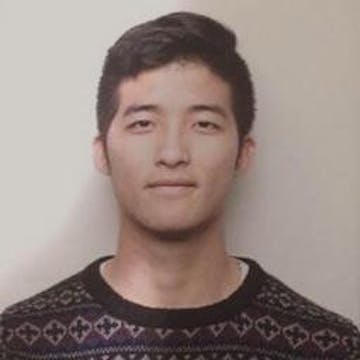Skip to content

Class Topics
Learning Objectives
What is a sprite?
Sprites are images that represent game assets. Player characters, enemies, projectiles, and other items are all called sprites (more on sprite types to come). Thus, sprites appear everywhere in games, including the title screen, within game levels, and even the game over screen.
A costume is one out of many different frames (pictures) of a sprite.


You can use a paint tool in Sprite to customize your sprite and costumes:


We can create a black cap for our cap using the paint brush and the color fill bucket.
The paint brush’s thickness can be updated by changing the number in the input on the right:


The smaller the number, the thinner the brush.
If you want to choose a sprite that’s more polished, you can look into the sprites library and you can either get a surprise sprite by pressing


Or choose a sprite from the library by pressing this button:


Note that if you’re in the costumes tab screen, the button would take you to find a costume. If you’re looking for a new sprite, you have to navigate back to the “Code” screen to find the same button.


Once you’re in the sprites library, you can use the filter buttons on top to filter for your sprite, simply clicking on the sprite would help you create the sprite on your screen.
Let’s create more than one sprite
Let’s pick 2 sprites of your choice from the library, and add some code to them:


Here we created a bear and a banana sprite, and the cat sprite was deleted. If you use the “trash can” icon that shows up on the top left corner of your sprite’s icon on the bottom, you’ll be able to delete the sprite.
We can create code logic for bear and for banana, let’s make the bear say “Yummy” when clicking on the bear, and make the banana rotate to the right by 15 degrees when clicking on the banana!
Learning about the Scratch Interface


This is your toolbox, you’ll see that this is separated into 3 sections:
Menu
Inside the vertical menu, you have colorful menu items for different categories of blocks, you can click on any of them to check what blocks you have inside of a specific menu.


Tabs
You have 3 tabs on the toolbox that gives you control of your sprite in Code, Costumes and Sounds.


Code
This is where all the blocks and menus are, you can drag blocks of code into the center of your screen to create logic for your game.
Costumes
You can check out all the variations of your sprite here, you can also use this to create your own custom sprites and costumes.
Sounds
Where sounds happen, you can use this tab to manage the sound recordings or browse from a library of sounds to pick from.
Blocks


Blocks are the basic building blocks of your game, there are hundreds of them and each one of them is shaped like a lego piece. You can find openings on each block and just aim them at a neighboring block you’ll be able to snap them together.
Want to print your doc?
This is not the way.
This is not the way.

Try clicking the ⋯ next to your doc name or using a keyboard shortcut (
CtrlP
) instead.